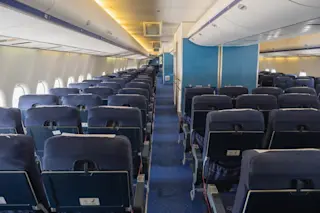I’ve never liked flying very much. I know a lot of physicians who feel the same way: By nature, we like to be in control, and flying involves giving up control.
But I was returning home from a conference 3,000 miles away, and that would have been a long drive. So as the plane took off, I settled into my window seat and did what I usually do: I closed my eyes and tried to will myself to sleep.
I had been on-call for the previous week and must have been exhausted; the next thing I knew my seatmate was jostling me.
“You said you were a doctor, right?” he asked urgently. “They’re asking for one up front.” In an instant, I was suddenly, jarringly, awake.
Medical training left me in a perpetual state of high alert, so when I’m told someone needs a doctor now I don’t think of ...














